Have you ever watched a televised advertisement or taken a second glance at a poster meant to sell you some delicious meal? As individuals living in Western society, there appears to be nothing wrong at the surface, but I urge you to think twice before you indulge in the message these corporations are trying to sell you.
Carol J. Adams in her interview with Annie Potts, describes how the sexualization and feminization of animals not only justifies the action of consumption, but also directly connects with the exploitation of women through cultural images that favor male centeredness. This can be described as:
Anthropornography → the presentation of animals, usually those presumed literally consumable, as sexually consumable in a way that upholds the sexual exploitation of women (Adams 14).
In other words, animals are presented in specified ways to generate capital in the food industry under the presumption that humans and non-human animals are separate species. Therefore, the sexualization and feminization of animals justifies consumption as it is targeted towards masculine consumers while simultaneously overlapping with the exploitation of women as justified consumption of feminized non-human animals implies that women are too in need of male control.
In order to apply this to our understanding of the women-nature association a select few images from Adams’ Sexual Politics of Meat will be analyzed.
Image #1: A Barbecue Fit For Men
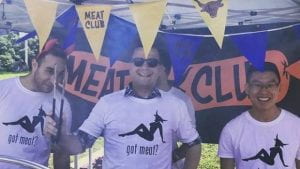
Pictured is a trio of smiling men, one holding a set of tongs, all under a pop-up tent adorned with banners that read ‘Meat Club’ while wearing t-shirts stamped with what appears to be a sexy silhouette of a woman with a bull head asking ‘got meat?’ Here we have our first example of anthropornography in which male dominant sexual economy is present (Adams 14). To be masculine means to eat meat, this explains the ‘meat club’ banner as these men are inviting you to their all inclusive club which includes the violation and sexualization of non-human animals and the exploitation of women, an all-in-one patriarchal package, “an act of self-definition as a privileged (male-identified) human, and it allows all other humans the access to that self-definition, too, as voyeurs and consumers” (Adams 17). Solidarity around meat consumption only reinforces male domination and acceptance in society as the non-human animal is exploited and consumed without consent.
The shirt sends an additional message, as the non-human animal is feminized and sexualized with the replacing of its body with that of a woman simultaneously with the animalization of women as her head is shaped into that of a bull. To place a bull’s head on the sexualized body of a woman then asking the message of ‘got meat’ while actively cooking meat for consumption is a practice that enforces hegemonic masculinity in which “…reassures and re-establishes human (male-identified) primacy at several levels are hidden or unacknowledged, it never has to expose itself for what it is” (Adams 20). Cultural ideologies teach us to look past this common tendency to exploit the women-nature association while every aspect of visual representation and action continues to be justified. Here men are the consumers while women and non-human animals are the consumed. As Kemmerer states in her review of Adams’ The Pornography of Meat, “…we fail to notice that ‘consumable’ animals are invariably portrayed as feminine, as sexual–available to men, just like female human beings (2006).
Image #2: The Hanging Objectification

This image proposes an abundance of startling messages in the objectification of women and non-human animals. Presented is a portion of raw meat, hanging from a hook that pierces the skin while its body is clothed in feminine attire. The chosen attire to clothe the raw meat in rather what is considered “revealing feminine clothing” works to sexualize the now dead non-human animal, a representation of “misery made sexy” (Adams 15). The message at the bottom of the advertisement reads, “It’s not acceptable to treat a woman like one” and comes from a coalition that stands against domestic violence. The first thing that stands out is the clear connection between nature and women as the ad calls out for men to speak out against violence in order to prevent women from being treated as if they were a dead animal. This functions as “propaganda for speciesism…art that reinscribes the denial of the animal through actively denying/depriving them of life…simultaneously reassures our self-definitions as humans while also affirming human superiority” (Adams 19) as if it is justified to violate the non-human animal dead or alive, the human as consumer while the non-human animal being consumed.
Adams also touches upon the narrative of raw as “real” in which “raw meat may express a more immediate sense of violation of what once was, what once existed and only recently lost their lives” (14). Using raw meat in awareness of domestic violence might create the perception of what harm violence against the human body can do; however, the connection between non-human animals and humans is absent. Adams speaks of artist privilege in which “…current laws allow artists to manipulate and kill someone else if that someone else is a nonhuman” (18). Because humans are viewed as a superior form of life, cultural images such as this one corrupt mainstream society.
Image #3: “Racks For Racks”
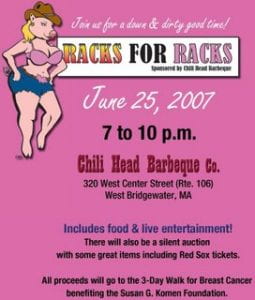
Included in this image is an advertisement for a fundraiser in support of raising proceeds for Breast Cancer sponsored by a barbeque company. What makes money raised for a good cause problematic one may ask? The proof is in the poster. As Breast Cancer is an already sexualized disease in Western society, this flier further adds to the objectification of women as the fundraiser is called “Racks for Racks,” insinuating that the more racks of meat eaten, the more you care about saving women’s breasts connecting masculine meat consumption to the desire for male pleasure by the female body. The presentation of the non-human animal pig produces both the animalization of women and feminization of animals as the pig is pictured to have a female stature, curvy with a large bust, ready for male consumption, anthropornographic evidence. Adams suggests “animalizing women and feminizing animals helps in this process because it renders women and dead animals used as flesh as commodities” (Adams 15). The consumption of non-human animal flesh is being consumed to generate capital in support of a feminized disease and the feminization of the pig for barbecue generates interest as it correlates closely with masculinity.
The chosen skin tone of the animal is also to be noted as it appears to be that of a white woman. Adams writes of ads appealing to white, heterosexual men as “heterosexual politics are also embedded; the assumption that woman is available as an orifice for men” (16). Society not only enforces the ideal that man must be attracted to woman and vice versa but also that white colonialism must be favored to support that “casting individuals as animalized humans is usually influenced by race, sex, and class…because the race hierarchy is inscribed so strongly in Western culture, a white pig was needed, so that the degradation being represented could be as strongly represented as possible” (Adams 15,17). Not only are women and non-human animals being consumed, but also people of color as the white human male works to gain control over the objectification of vulnerable communities.
Author’s Selection: Wrap it Up
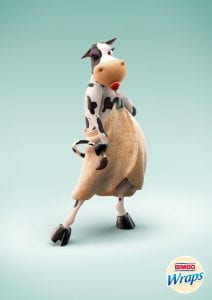
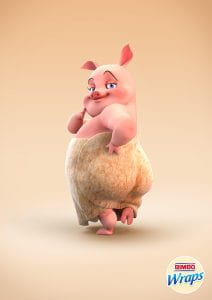
Pictured is the advertisement for a bakery corporation’s product, wraps. On one side we have a cow standing with a feminine pose holding its tail with facial features of long lashes, juicy red lips, and purple eyeshadow, all sealed with a wink. On the other side we have a pig also with feminine facial features of rosy cheeks, long lashes, and arched eyebrows while standing in a pose that draws explicit attention to its voluptuous rump. Both animals feminized, sexualized, and draped in a food product made to sell to an audience. This is not an accident but instead anthropornography as non-human animals are depicted as sexualized women, promiscuous and in need of sex calling for men to consume them as if they are in desire to be exploited and violated (Kemmerer 2016). The wrap literally wrapped around them as if tempting for the consumer to take it off and expose the body as if consumption of their product gets you closer to pleasure. The use of non-human animals as a “model” feminizes animals to show that both non-human animals and women are being consumed and oppressed due to male societal dominance.
These are only a select few examples of the many efforts to justify exploitation of women and consumption of non-human animals through sexualization, feminization, and animalization practices in the food marketing industry all with the desire to objectify. Adams describes objectification in the sexual politics of meat to permit an oppressor to view another being as an object which then turns into violation through object-like treatment, fragmentation, brutal dismemberment, and finally consumption (13). Animals are viewed as objects, their life taken away for the human palate. Women are perceived as objects meant to be used in ways that satisfy men. The overlap in cultural images justifies that masculine power is the backbone of society’s structure and in feminizing non-human animals, we justify that meat consumption is just as sexy and valuable as women subjugation.
As each of the images above present, white male privilege is at the center of each message and although solutions to improve societal outlook are possible, “people don’t want to give up their privilege; after all inequality is tasty” (Adams 21).
Works Cited:
Adams, Carol J. “Examples of the Sexual Politics of Meat.” Carol J. Adams, 2018, https://caroljadams.com/examples-of-spom/.
Kemmerer, Lisa. “The Pornography of Meat by Carol Adams.” Philosophy Now, 2006, https://philosophynow.org/issues/56/The_Pornography_of_Meat_by_Carol_Adams.
Potts, Annie, and Carol J. Adams. “The Politics of Carol J. Adams.” Antennae, no. 14, 2010, pp. 12–24., https://static1.squarespace.com/static/54792ff7e4b0674c74cb719d/t/55dc8dace4b0ad76d7277cb7/1440517548517/ANTENNAE+ISSUE+14.pdf. Accessed 5 Mar. 2023.
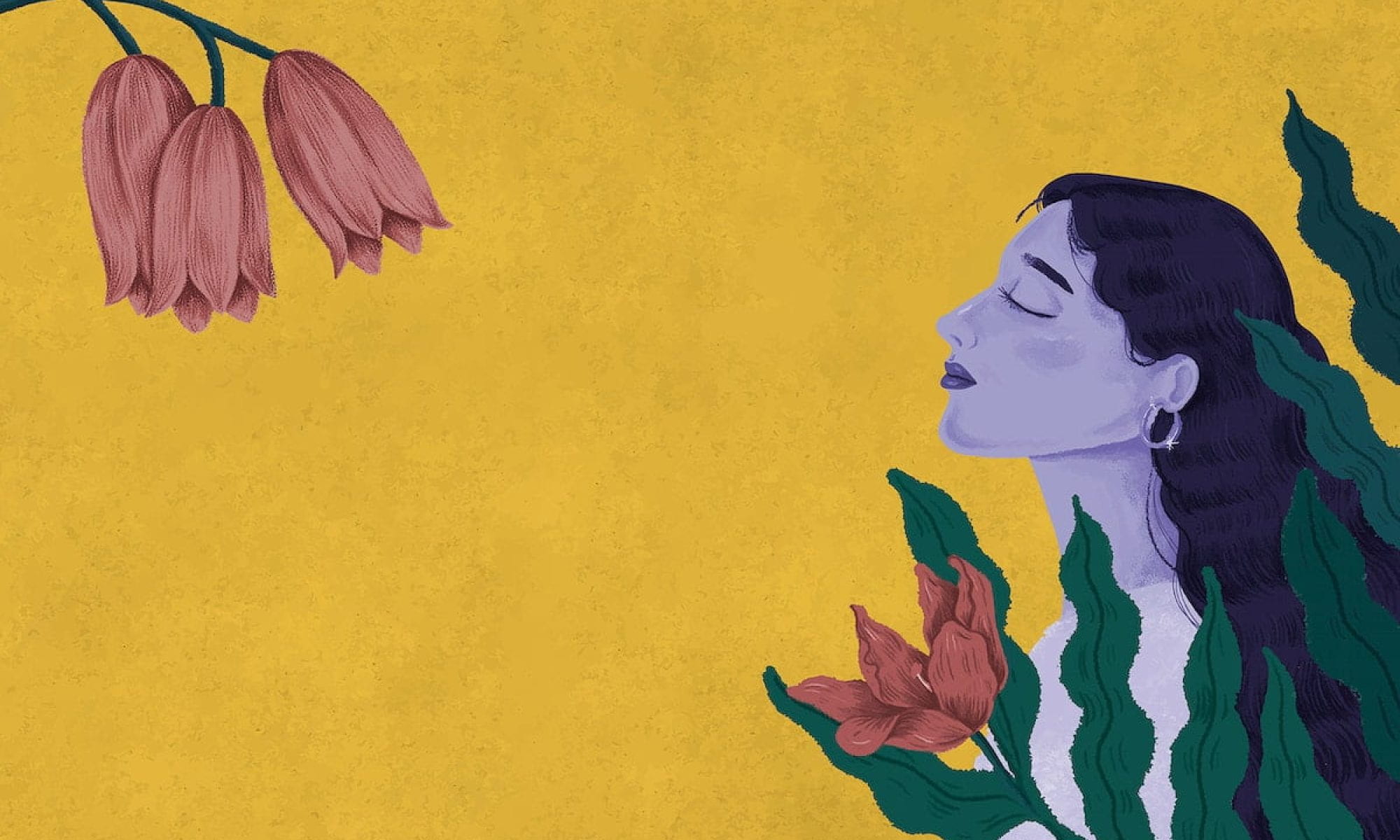
Kylie –
I really appreciated the way in which you carefully and thoroughly analyzed the photos for this blog and broke it down so that the viewer could clearly understand the ways in which non-human animals and women are exploited.
I almost picked that first photo as well. The one that you refer to as “an all-in-one patriarchal package” made me chuckle because I thought the same exact things! I think one of the things that came through to me through your analysis was this idea of an “old boys club” mentality. It was almost as though they were exerting their heteronormative gendering of masculinity through this club. This kind comradery normalizes and reinforces their position of what women are to them (meat) and what non-human animals are (meat), while once again exploiting both sexually. Both are consumable. Adams refers to these “overlapping image of women and animals” which occurs over and over in the ads she used in her exhibit (Potts, 14). This is where we see a clear and flagrant link between women and non-human animals in terms of their shared exploitation and oppression.
I also used the domestic violence ad in my blog. I was so incredibly disturbed by this ad as well. You point out that his is an example of “propaganda for speciesism…” and I could not agree more. What disturbed me most about this ad was that in trying to appeal to a male crowd about domestic violence, they sexualized the meat. They created a dichotomy of meaning for me with their message. You are exploiting a non-human animal by displaying its dead body and dressing it up in sexy women’s clothing in order to spread a message about respecting and supporting women. They want to spread the message to not treat women as mere “animals” (which we ALL are) while they desecrate the animal. This is what they thought would appeal to men in their efforts to spread a message about non-violence? It’s baffling to me and REALLY made me angry! Adams said “Why, in the end, do we parse another’s suffering, and try to calibrate what is acceptable and what is not acceptable for them to experience on their way to becoming dead flesh?” (Potts, 14). I read this sentence and thought…Is this what is acceptable to show so that women do not become the dead flesh? Is it ok then to “calibrate” that it is acceptable to use the non-human’s dead flesh then to deliver that message? For me, it only further normalizes the violence.
The racks for racks ad was tone deaf beyond words. You hit on the objectification of women and that “the more racks of meat eaten, the more you care about saving women’s breasts” which was a perfect example of masculine consumption and also echoed indulgence. What I could not stop thinking about was how INCREDIBLY insensitive this ad was (in addition to the exploitation, consumption, sexualization of the women and non-human animals) in term of what these women are often faced with which is a mastectomy. So many women I know that have had breast cancer have had a full or partial mastectomy. At a time when a woman is faced with her mortality and may have to make the decision to sever off a part of her body, she is reminded by this ad of the importance of these breasts especially to men. Men aside, it is a very emotionally and mentally challenging time her one’s life and to be reminded of what her breasts mean in terms of their place in society, is cruel. The pig in this ad has voluptuous breasts. They don’t show her having a mammogram or a biopsy, do they? Why? Because it isn’t sexy for the intended audience of this ad. I doubt including this chart of statistics in their ad would have attracted the “male gaze” (page 2 of booklet):
https://www.cancer.org/content/dam/cancer-org/research/cancer-facts-and-statistics/breast-cancer-facts-and-figures/breast-cancer-facts-and-figures-2019-2020.pdf
Let’s also not forget that men also get breast cancer. According to the National Breast Cancer Foundation, approximately 2800 men per year get breast cancer and about 500 a year die. While this number is minute compared to women, it is still something to be considered!
Your ad for the bakery pretty much summed up this entire assignment and all that Adams is trying to convey in her work. Good work pointing out the wrapping (and then unwrapping) of the animal and what that is meant to evoke. I would not have caught that!
Citations:
Examples of the sexual politics of meat. Carol J. Adams. (n.d.). Retrieved March 10, 2023, from https://caroljadams.com/examples-of-spom/
Potts, Annie. “The Politics of Carol J Adams.” Anntennae, no. 14, 2010, pp. 12–24.
Teresa,
Thank you for your thoughtful comment, I appreciate you taking the time to read my blog post! I think it is crucial that you mention not only do these advertisements exploit women and justify the consumption of non-human animal, but they also diminish any acknowledgement of emotion and empathy towards life outside of masculinity. In this image alone, we can see both non-human animal and women objectified as the body of the animal is only to produce meat and the body of the women is solely for the pleasure of men; but as you said, breast cancer is not a disease that only affects women. Although women experience higher rates, men too can be diagnosed with breast cancer but patriarchy has worked to construct the feminization of this disease.
Best,
Kylie C.
Hi Kylie!
It was a great choice to start off this piece by addressing the reader directly when you write, “I urge you to think twice.” Because that’s just it isn’t it—the solution to this oppressive paradigm is for people to shed their ignorance and inattention.
As Adams puts it in her piece “The War on Compassion,” “we [have] already learned to tolerate a hierarchical world in which killing is accepted.” And in order to rewrite the system of patriarchal hierarchy starts with dismantling privilege. In her interview with Annie Potts, Adams says, “Pointing out how privilege works is very threatening to those who benefit from privilege because privilege allows itself to be unreasoned, unjustified, unexamined…Privilege isn’t an idea; it’s an experience. And generally, privilege grants pleasure” (Potts 15).
In her article “Starve the Patriarchy!” Sambhavi Sudhakar summarizes Joseph Campbell’s take on this subject. She writes, “Campbell explores how patriarchal values are expressed through the normalisation of animals’ deaths in common practices, whereby “killed and slaughtered, it yields to people its flesh to become our substance, teeth to become our ornaments, hides for clothing and tents and bones for tools”. In contrast, according to Campbell, the plant world presents an imagery that is nurturing, yielding and abundant. It is through this that we may draw an association between carnivorous animals and male behaviour. Through metaphorical images based on killing animals, we derive politically appropriated terms of usurping, absorption, control and domination. It is also significant that conventionally, non-consumption of meat by men is often associated with subordinated masculinity wherein they are considered “lesser” male and often dismissed as effeminate.”
Could you imagine walking up to the group of “masculine” men belonging to the “Meat Club” and explaining how they’re not only objectifying women and animals but that their position itself is a privileged one based on domination and oppression? I don’t imagine it would go over very well. As Sudhakar and Campbell both emphasize, meat consumption is masculine, and so the opposite of that would be effeminate. And not-masculine already bumps you down on the patriarchal totem pole…as less than. I don’t think their meat club is actually all-inclusive—it’s just for those at the height of privilege.
Here’s the link to Sudhakar’s article, in which she also analyzes anthropornographic images.
https://headstuff.org/topical/speciesism-sexual-politics-meat/
All the best,
Jas
Jas,
Thank you for your thoughtful comment, I appreciate you taking the time to read my blog post! I can completely see where you are coming from in saying that the “Meat Club” is not necessarily inclusive as it only allows room for those with privilege, those men who engage in meat consumption that can show their “true masculinity.” I agree, this “Meat Club” is exclusionary in terms of comparing acceptance to the rest of society, but inclusive used as a way to entice and convince other men that if they follow these exploitative actions of consuming non-human animals and women, then they can fit into what appears to be an “inclusive” group when in actuality it is very much exclusion of masculine authority from the rest of society.
Best,
Kylie C.
Hi Kylie,
As always, your post is very insightful, and you highlight really well how cultural images used in the food industry perpetuate patriarchal norms and reinforce harmful gender roles. It is alarming to see how sexualized and feminized imagery is often used to sell meat, further perpetuating the idea that women and non-human animals are commodities to be consumed by men. As you rightly pointed out, this not only reinforces harmful gender roles, but also perpetuates the notion that non-human animals are inferior and exist solely for human consumption. The examples you provided effectively illustrate the interconnectedness of violence against women and violence against non-human animals, and how our culture perpetuates these forms of oppression.
The use of raw meat in awareness of domestic violence is often seen as a shock tactic to emphasize the physical harm inflicted on a human body. However, it fails to establish the connection between non-human animals and humans, as it only focuses on the harm inflicted on the human body. This narrow perspective reinforces the idea of human superiority over non-human animals, which is deeply ingrained in our culture and society.
Such cultural images tend to corrupt mainstream society, as they reinforce the notion that humans are superior to all other living beings. This perception of human superiority has contributed to the widespread mistreatment and exploitation of non-human animals, as well as the environment. It is crucial to recognize that all living beings have inherent value and deserve to be treated with respect and compassion. We must expand our awareness beyond just human-centric perspectives and recognize the interconnectedness of all living beings to develop a more empathetic and inclusive society that values all creatures.
I find the image of men raising funds for Breast Cancer highly insensitive and disrespectful, given that my sister is a breast cancer survivor. The fundraiser’s name, which includes the term “racks,” implies that consuming more meat equates to caring more about saving women’s breasts. This connection between masculine meat consumption and the desire for male pleasure through the female body perpetuates harmful gender stereotypes. Also, the use of a pig in the fundraiser’s presentation further objectifies and sexualizes women, as the pig is portrayed with a female physique, curves, and a large bust, ready for male consumption.
These images not only perpetuate the gender binary and reinforce the idea that women and non-human animals are objects to be consumed, but it confirms that “Anthropornography provides a way for men to bond publicly around misogyny … [while they] publicly consume what is usually private” (Adams as cited in Kemmerer, 2006). It is important to recognize the harm of these cultural images and bring awareness to these issues that have become unquestioned norms that objectify women and non-human animals for the benefit of a select group.
On a side note, my sister and I find it baffling how a society that profits from the objectification and sexualization of women and the female breast to promote meat consumption can be repulsed by the natural act of breastfeeding an infant in public.
Works Cited
Kemmerer, Lisa. “The Pornography of Meat by Carol Adams.” Philosophy Now, 2006, https://philosophynow.org/issues/56/The_Pornography_of_Meat_by_Carol_Adams.
Hi Kylie,
As always, your post is very insightful, and you highlight really well how cultural images used in the food industry perpetuate patriarchal norms and reinforce harmful gender roles. It is alarming to see how sexualized and feminized imagery is often used to sell meat, further perpetuating the idea that women and non-human animals are commodities to be consumed by men. As you rightly pointed out, this not only reinforces harmful gender roles, but also perpetuates the notion that non-human animals are inferior and exist solely for human consumption. The examples you provided effectively illustrate the interconnectedness of violence against women and violence against non-human animals, and how our culture perpetuates these forms of oppression.
The use of raw meat in awareness of domestic violence is often seen as a shock tactic to emphasize the physical harm inflicted on a human body. However, it fails to establish the connection between non-human animals and humans, as it only focuses on the harm inflicted on the human body. This narrow perspective reinforces the idea of human superiority over non-human animals, which is deeply ingrained in our culture and society.
Such cultural images tend to corrupt mainstream society, as they reinforce the notion that humans are superior to all other living beings. This perception of human superiority has contributed to the widespread mistreatment and exploitation of non-human animals, as well as the environment. It is crucial to recognize that all living beings have inherent value and deserve to be treated with respect and compassion. We must expand our awareness beyond just human-centric perspectives and recognize the interconnectedness of all living beings to develop a more empathetic and inclusive society that values all creatures.
I find the image of men raising funds for Breast Cancer highly insensitive and disrespectful, given that my sister is a breast cancer survivor. The fundraiser’s name, which includes the term “racks,” implies that consuming more meat equates to caring more about saving women’s breasts. This connection between masculine meat consumption and the desire for male pleasure through the female body perpetuates harmful gender stereotypes. Also, the use of a pig in the fundraiser’s presentation further objectifies and sexualizes women, as the pig is portrayed with a female physique, curves, and a large bust, ready for male consumption.
These images not only perpetuate the gender binary and reinforce the idea that women and non-human animals are objects to be consumed, but it confirms that “Anthropornography provides a way for men to bond publicly around misogyny … [while they] publicly consume what is usually private” (Adams as cited in Kemmerer, 2006). It is important to recognize the harm of these cultural images and bring awareness to these issues that have become unquestioned norms that objectify women and non-human animals for the benefit of a select group.
On a side note, my sister and I find it baffling how a society that profits from the objectification and sexualization of women and the female breast to promote meat consumption can be repulsed by the natural act of breastfeeding an infant in public.
Rose,
Thank you for your thoughtful comment, I appreciate you taking the time to read my blog post! It is indeed baffling to see how patriarchy and capitalism work to commodify, objectify, and sexualize all in efforts to promote toxic masculinity while oppressing all who fall below on the ladder of social hierarchy. As someone who is interested in how Breast Cancer is politicized and sexualized, connecting this advertisement titled “racks for racks” to vegetarian ecofeminism and the association between women and nature was significant in further analyzing the effects of androcentrism in our cultural structure. As you mention, not only does it perpetuate harmful gender stereotypes, but it also justifies that non-human animals and women are meant for consumption. These messages are often disregarded in society as we are taught to look past them, but when we begin to analyze deeper, it becomes crucial to understand the need to take action for change.
Best,
Kylie C.
I delight in, result in I discovered just what I was looking for.
You have ended my 4 day long hunt! God Bless you man.
Have a great day. Bye